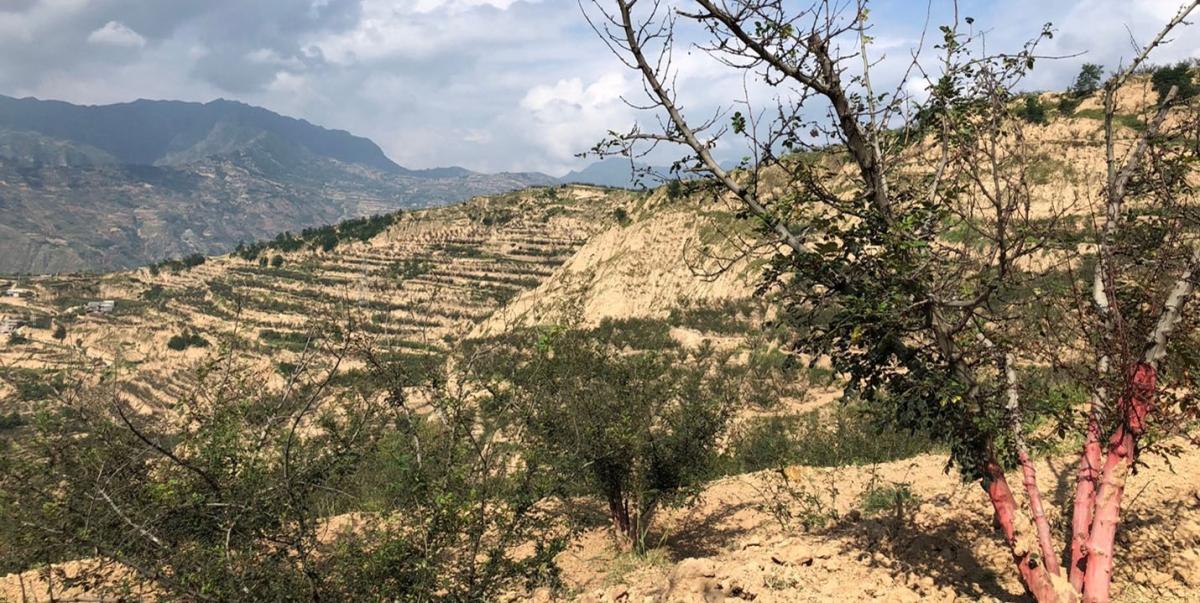East Asia Blog Series
Upscaling Sustainable Land Management to Improve Rural Livelihoods in the PRC
Zhiming Niu 18 Jan 2022
A project restores degraded lands, improves climate resilience of landscape ecosystems, and promotes green development in the western regions.
Overview
The People’s Republic of China (PRC) has experienced massive land degradation and soil erosion problems due to unsustainable farming practices, overgrazing, and loss of forests, among others. These weakened the environment and ecosystems in the western region of the country, contributing to low agricultural productivity and poverty.
In response, a technical assistance grant funded by the Global Environment Facility (GEF) and supported by the Asian Development Bank (ADB) expanded the scope of sustainable land management investments in selected provinces and autonomous regions to reduce regional economic disparities and ensure sustainable natural resources management.
Project information
48116-001: Sustainable and Climate-Resilient Land Management in the Western Regions
Project snapshot
-
-
- Approval date: 9 January 2015
- Closing date: 31 January 2019
- Total project cost: grant from Global Environment Facility ($4.61 million); counterpart funding, Government of the PRC ($3.04 million).
- Executing agency: State Forestry Administration (reorganized as State Forestry and Grassland Administration in April 2018); Ministry of Finance (acted as the project coordinating office); Six provincial governments (Gansu, Guizhou, Inner Mongolia, Qinghai, Shaanxi, and Sichuan).
- Financing: Global Environment Facility, Government of the PRC.
-
Challenges
Land degradation leads to poverty. Severe soil erosion degrades grasslands and diminishes natural forests resulting in low agricultural productivity, damaged infrastructure, and loss of watershed protection. Almost 90% of rural people living in poverty in the PRC are in areas suffering from soil erosion. Social and economic consequences include high unemployment, low household income, and accelerated migration to more prosperous areas.
Compared with eastern and southern provinces, the situation is severe in the western region, which supports a population of about 400 million or 75% of the PRC’s rural poor.
Context
Sustainable land management and climate change resilience have been a national priority over the last 20 years. The government has been implementing various domestic programs to scale up land degradation control measures and investments in the western region. The government also partnered with the GEF to promote and introduce integrated ecosystem and sustainable land management since 2002 through the PRC-GEF Partnership on Land Degradation, for which ADB supported the development of the country framework. In 2012, the ADB helped develop a new 10-year sustainable land management strategy for the partnership to replicate and upscale earlier achievements of the framework, with a strong emphasis on investments by local governments and communities.
Solutions
A technical assistance grant was co-financed by the GEF to strengthen the capacity of the PRC government in implementing sustainable and climate-resilient land management approaches, such as integrated cropping systems, public-private partnerships, eco-compensation mechanisms, and access to e-commerce marketing. The project supported 16 pilot sites to demonstrate these approaches. These pilots were upscaled or replicated further through larger government investment programs and projects. It helped improve the resilience of landscapes and ecosystems to climate change and promote sustainable land management in six provinces in the western region—Gansu, Guizhou, Inner Mongolia Autonomous Region, Qinghai, Shaanxi, and Sichuan.
The project also demonstrated practices that improved local farming methods such as water-saving irrigation, inter-cropping, and integrated pesticide management of forests.
Sustainable land management and restoration techniques for addressing land degradation were promoted under 12 investment projects and at seven innovation sites across the six provinces. The project provided technical support for seed forests nurturing, grassland management, intercropping, water-saving irrigation, agroforestry management, and climate resilient farming.
Two public-private partnerships were developed. The first one was participated by a local power plant (using biomass from shrubs mowing), local farmers, and local forestry management agencies in Inner Mongolia for nurturing management of Salix shrubs for about 250 ha, including farmers’ engagement in development of woods products. The other one was participated by a fertilizer producer, local farmers, and government agencies in Shaanxi for bio-fertilizer development and trial in 33.5 ha land for cash crop growing.
Meanwhile, two eco-compensation mechanisms (payment for ecosystem services) for sustainable watershed management were established. The firs one is a small watershed management at the Loess Plateau area in Liquan of Shaanxi covering an area of 729 ha. Next was a rural community engagement in payment for ecosystem services at Xinligou small watershed in Kongtong of Gansu.
The project also rehabilitated the Shaanxi Animal Rescue Center (SARC) following international standards and good practices for botanical gardens and wildlife conservation. In addition to their conservation functions, the QNBG and SARC provide state-of-the-art ecotourism products and services. Their revenues are reinvested for sustainable financing and conservation of the broader mountainous area.
About 260 ha of botanical gardens were established at QNBG, including 22 specialized gardens and associated public education facilities, such as a public education center, a herbarium, and two outdoor education camps. Designated as a national and provincial nature education base, the QNBG was visited by over 80,000 students from 2017 to 2019.
Research facilities such as laboratory, animal hospital, public education center, and tourist information center were installed at SARC. These also include the breeding and exhibition areas for endangered animals.
A strategy and action plan for land degradation control was developed for Guizhou and Sichuan provinces, respectively. The project’s advisory services included a comprehensive assessment of the provincial legal and policy regime for land degradation, and assistance in formulating a framework of sustainable land management monitoring indicators and approaches. In 2018, both provinces have endorsed their respective strategy and action plans from which major guidelines have been taken up and applied in new investment projects.
More than 2,400 local officials and farmers in Guizhou and Sichuan provinces were trained to enhance their technical capacities on sustainable land management.
Results
The restoration of degraded grassland and farmland were implemented on 1.81 million ha of land in Inner Mongolia, Shaanxi, Gansu, and Qinghai provinces, resulting in an increase of 10% in land productivity. Sustainable forest management was implemented on 442,000 ha of land in Qinghai, increasing the forested area by an estimated 1.2%. Improved forestry management and expanded forested area can increase the carbon stock by 83,782 tons of carbon dioxide equivalent by 2023 in Qinghai province.
The land area under sustainable land management reached 2.5 million ha in six provinces after upscaling. Biodiversity conservation habitats on about 61,458 ha have been restored and protected through ecological rehabilitation on forestry land. Through the promotion of water-saving irrigation practices in Gansu and Shaanxi provinces, water availability improved on about 390,000 ha of rain-fed land. Per capita annual income increased by an average 35% in the project areas through sustainable livelihoods and green development.
Lessons
Improving institutional capacities can play a catalytic role in upscaling investments and promoting sustainable land management and green development livelihoods.
Promoting community awareness at the local level can improve farmers’ knowledge of climate change impacts, climate-resilient land management, and low-carbon production.
Strengthening the technical capacity of the stakeholders and the resources involved in the project planning and implementation can boost the preparation of local strategy and action plans on sustainable land management, which is critical for the delivery of future government ecological restoration efforts.
References
Asian Development Bank (ADB). 2001. Technical Assistance to the People’s Republic of China for the PRC-GEF Partnership on Land Degradation in Dryland Ecosystems. Manila.
ADB. 2014. Technical Assistance to the People’s Republic of China for Sustainable and Climate-Resilient Land Management in the Western Regions. Manila.
ADB. 2021. Technical Assistance Completion Report: Sustainable and Climate-Resilient Land Management in the Western Regions in the People’s Republic of China. Manila.
ADB. 2021. Terminal Evaluation Report: Sustainable and Climate-Resilient Land Management in the Western Regions in the People’s Republic of China. Manila.
Author

Zhiming Niu
Senior Project Officer (Environment), East Asia Department, ADB
This blog is reproduced from Development Asia.


